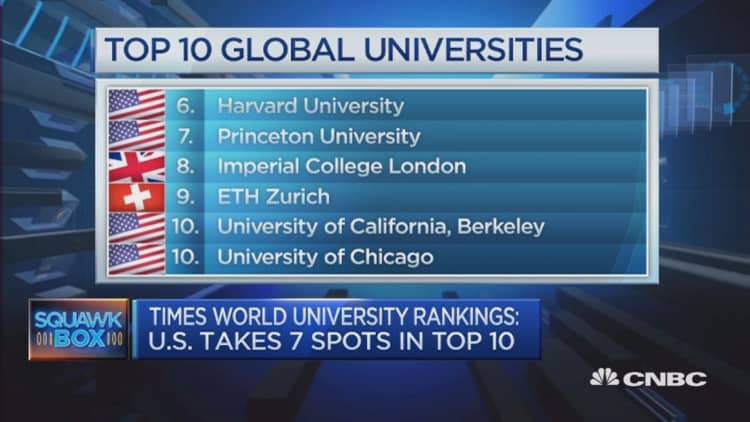Singaporean university students who're feeling the pinch have good reason, according to new research.
The cost of attending university in the city-state has jumped 38 percent on average since 2007, the Singapore arm of ValuePenguin, a consumer research firm in New York, told CNBC.
Singapore has five major universities: National University of Singapore (NUS), Nanyang Technological University (NTU), Singapore Management University (SMU), Singapore University of Technology and Design and Yale-NUS. The ValuePenguin research looked at the yearly out-of-pocket cost of tuition for Singapore citizens after they received government subsidies.
The annual tuition cost for a general arts and science degree was between S$6,000 to S$7,000 ($4,353 to $5,078) in 2007, according to ValuePenguin, but would cost between S$8,000 and S$11,000 now, up as much as 51 percent. SMU, which at S$7,500 for the degree in 2007 was the most expensive, has hiked fees to $11,300, a 50 percent jump, the research found.
The cost of a law degree at NUS, meanwhile, rocketed from S$6,100 in 2009 to S$12,400, a 103 percent hike, and a business degree has jumped 53 percent from the same base in 2008 to S$9,450.
Similarly, a business degree from NTU went from S$6,110 in 2007 to S$9,250 in 2015, a 50 percent increase, while tuition for a business degree at SMU increased from S$7,500 in 2007 to S$11,200 in 2015, up 49 percent.
Official data showed that Singaporean's are spending more on higher education. The government's Household Expenditure Survey found that Singaporean families spent more than S$1 billion on university tuition in 2014, compared to S$650 million a decade earlier, according to the government's Household Expenditure Survey.

Duckju Kang, head of Asia at ValuePenguin, told CNBC that increased labor costs in Singapore could have been a factor in the big jump in university costs, but added that that didn't paint the entire picture; Singapore's median household income grew 10 percent over the period, CPI rose 25 percent, yet tuition was up 38 percent.
He noted that while the cost to universities of owning and maintaining buildings, covering utilities and buying research equipment were high, those costs still could not be reconciled with the larger increase in students' fees.
"Unless costs for all of these increased at the same rate (and CPI suggests that they didn't), the rise in college tuition must be influenced by other factors, such as pure price increases," he said.
According to data from the Singapore Government, the percentage of applicants who won places on publicly-funded degree courses increased to 32 percent in 2015, from 25 percent in 2007.
"Government subsidies play a huge role in increasing education affordability in Singapore," Kang said.
And Singapore's increases were, in fact, relatively tame when compared to other countries. College tuition in the U.S. increased by 50 percent between 2001 and 2015, according to College Board, while CPI increased by 13 percent in that period.
However, the rising cost of higher education was not a universal trend.
ValuePenguin found that the cost of higher education in South Korea increased 8 percent between 2007 and 2015, while during the same period the country saw a 22 percent increase in inflation, according to Korean Statistical Information Service.


